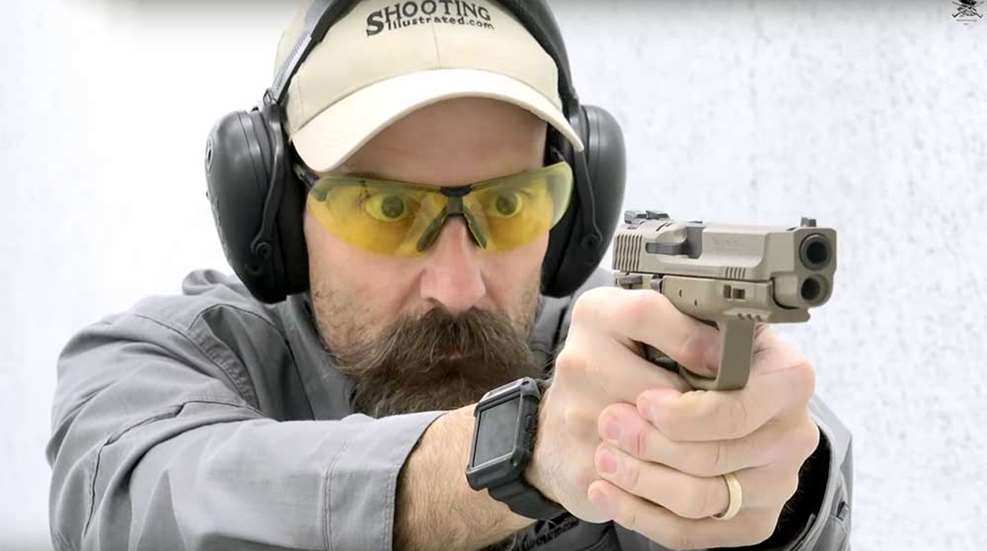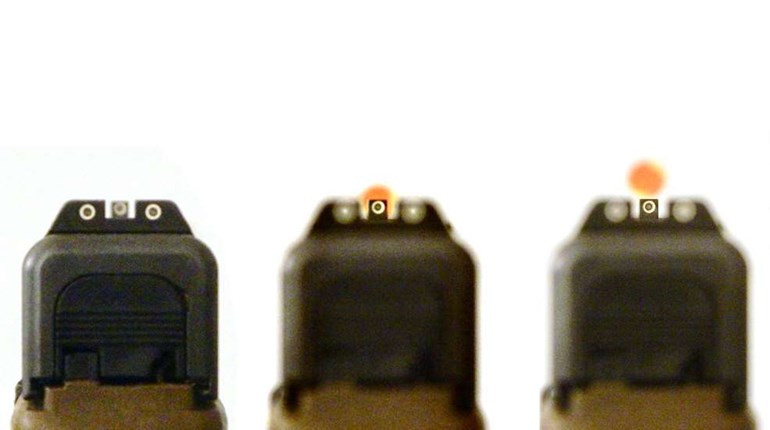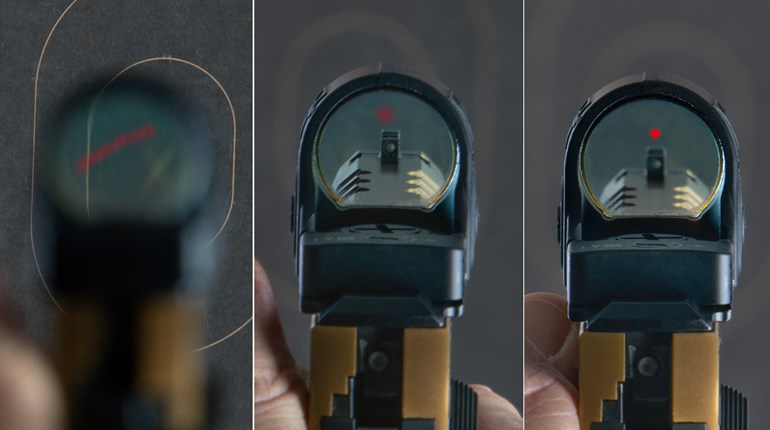
The art and science of marksmanship encompasses the ability to make rapid and accurate shot placement. Such effective round placement requires what is commonly referred to as repeatable on-demand performance. To gain this proficiency is to perform a sequence of gun handling and marksmanship skills at maximum efficiency one step a time. Approaching a list of priority tasks is a skill that can significantly enhance shooting efficiency.
Whether in combat (personal defense) or competition, what should be included in this task listing is: target identification (is this a shoot target?), visually selecting where on the target (specific impact point) you will make round placement, presenting the firearm (carbine from slung position or handgun from open or concealed carry position), establish stability (a solid enough grip and mount), bring that stability to alignment (using the likes of natural point of aim and proprioceptors), visually confirming that alignment (eyes verify), pressing off a round (without disturbing muzzle alignment with the target) and then following through in prep for the next shot if there is one.
Make A List, Check It Twice
First and foremost, it's crucial to start by reviewing your list of tasks. Take a moment to assess the scope and complexity of each item. Some tasks may be quick and straightforward, while others may require more time and effort. Understanding the nature of each task will allow you to allocate your time and resources appropriately.
What takes the most time takes the most effort. Given that a trigger press usually occurs in less than 2/10ths of a second for most shooters, muzzle alignment with the target consumes the lion’s share of time and effort and is the crux of making the shot.
Once you've reviewed your list, consider identifying the most critical and time-sensitive tasks such as muzzle alignment. Although everything is important, these are the items that demand your predominant attention and should be addressed beforehand. Prioritizing tasks based on importance or urgency ensures that you meet your commitments and avoid unwarranted rushes. How well has rushing the shot ever served you? If you are not held accountable to a specific time then time is not a priority.
Keep The Main Thing, The Main Thing
Another effective strategy is to categorize tasks by their importance and impact. Not all tasks are created equal, and some are more significant than others. By prioritizing high-impact tasks, you can make substantial progress and achieve meaningful results. A good example of this is drawing a pistol from concealed carry position. Presenting the pistol to the target is what takes the greatest amount of time in the fire control sequence and is the highest priority as you cannot make effective round placement until the muzzle is in alignment with the target.
Breaking down complex tasks into smaller, manageable subtasks can make them feel less overwhelming and more achievable. This approach allows you to tackle each subtask incrementally, building momentum and confidence as you go.
Using the above handgun presentation example, the task of drawing your handgun from its carry position can be broken down into subcomponent tasks. Procuring a master strong hand grip in a minimal amount of time (about 4/10thes of a second) would significantly contribute to reducing your overall presentation time. Immediately following setting your master grip, would be to bring the muzzle form the holster toward the direction of the target which can happen in under 4/10ths of a second.
In real-world application it's unrealistic to assume that everything will go according to plan, so having some flexibility in your performance sequence is essential. Reassess your task list. As circumstances change, new priorities may emerge, or existing ones may evolve. For example, you may have run dry, or the target moved, or you moved, or you and the target have changed physical position. Being adaptable and open to adjustments ensures that you stay on task. Training for such contingencies as reloading and malfunctions clearing are essential to your overall shooting performance.
It is recommended by the experts to execute one task at a time and execute it well prior to moving on to the next task. Having your mind, your attention, your intention and/ or other mental faculties focused on more than one task is like having one foot in two separate canoes on a river – it never turns out for the better.
Plan For The Long Run
Approaching a list of priority tasks requires a strategic and organized mindset. When training to execute multiple sequential tasks, acknowledging your accomplishments, no matter how small, can boost motivation and provide a sense of satisfaction. Celebrate your victories. A positive mindset is an asset in maintaining productivity, fostering discipline, and tackling complex tasks with enthusiasm.
When it comes to effective gun handling and marksmanship it’s a matter of taking on one step at a time ensuring that your task list is clearly defined and with the mental focus needed to perform each step at the very edge of your skills envelop.




































